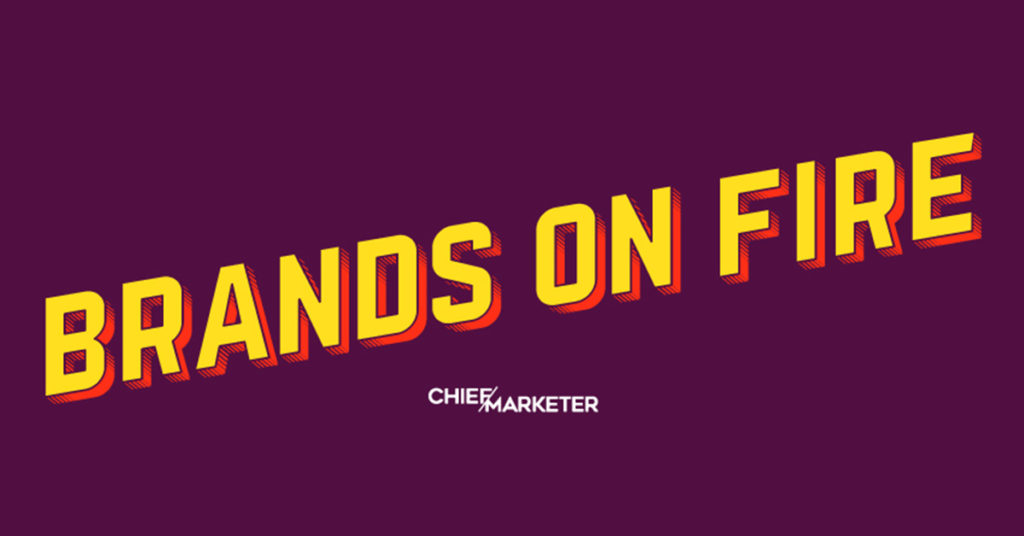Claiming that your brand’s marketing philosophy is “social-first” is one thing. Truly walking the walk is another. Boardroom, the sports business media network founded in 2019 by Kevin Durant’s investment company 35V, is a shining example of the latter.
What started as a series on ESPN+ has evolved into newsletters, podcasts, premium video, written editorial and daily news that garners millions of monthly unique views and boasts tens of thousands of subscribers—all accrued in less than three years. Critical to the network’s growth was a test-and-learn strategy to pinpoint what content—and in particular, what format—worked best on social, and then applying that to developing its editorial strategy.
“While it sounds a little crazy to have done it that way, it was extraordinarily helpful because by the time we were hiring a full editorial staff, a full video staff and an audience development team, we already had these great use cases for what really worked for us on social,” Boardroom and 35V CMO Sarah Flynn told Chief Marketer. We spoke with Flynn about Boardroom’s growth strategy, its three-tiered target audience, experiential marketing plays and next steps for the brand moving forward.
Chief Marketer: Boardroom launched just prior to the pandemic in 2019. Today, it brings in 2.3 million unique views to its website, 216 million impressions and 8 million video views monthly. Discuss your growth strategy for the brand and how you achieved this success.
Sarah Flynn, CMO of Boardroom and 35V: When we first started growing the network, the most important thing was making sure that we had a differentiated voice and that we weren’t just another sports platform. People cover things on social media; there are a lot of different perspectives in the world. We needed to establish the “whys” of our existence. Once we started doing that, we were able to galvanize our network organically, through word-of-mouth, and have the athletes, entertainers, executives and people in our circles understand what we were trying to do and support it and promote it, which provides a halo effect and starts the initial organic growth.
Then, once we went through phase one, we were able to put our foot on the gas a bit more with an organic and paid social media strategy, digital marketing in general, and continuing to create awareness through the way that we cover different athletes, executives and entertainers, and making sure they’re sharing and reconnecting with their audiences. As well as starting to be more constructive about where we see ourselves out in the world, like being at VeeCon and the upcoming film we have, “NYC Point Gods,” and having that be affiliated with Boardroom rather than going full 35V. It’s being thoughtful about the places that we can be in the world, in addition to the “always-on-ness” of marketing on social media and continuing to drive people back to our site.
CM: So, the athletes and executives you cover are a key part of your word-of-mouth strategy.
SF: Athletes, executives and everybody in our network. We couldn’t do what we do from an editorial coverage standpoint if we didn’t have some of that buy-in from the early days. When we first started, we knew we had access and understanding. We used that as an asset on the content side, and it was also how we were thinking about it on the marketing side, because we knew that if we had buy-in from a lot of those people, they would start talking about it. They would subscribe to our newsletters. For a little while at the beginning, the core of our audience was actually the people that we were covering—and they were telling their fans.
And obviously, we have the force that is Kevin Durant. His fans knew early on, and that helped us get a jump start on follower and traffic growth, but also helped us understand what that audience and fans really want to see so that we were able to craft our content strategy around it. And the content piece and the marketing piece have to go hand in hand.
CM: After establishing your voice, how did you determine what your fans wanted?
SF: We did a lot of testing on social, and not just topic testing, but format testing, seeing what worked organically, seeing what performed well, if we put paid spend behind certain things. There was almost an entire year around building the social strategy where we didn’t have a full editorial strategy in place or a full internal team. We had not ramped up hiring yet because we wanted to do a lot of that content-type testing and make sure that the things we thought people wanted to see were really the things they wanted to see—before we actually grew our team and understood the needs that we had internally.
While it sounds a little crazy to have done it that way, it was extraordinarily helpful because by the time we were hiring a full editorial staff, a full video staff and an audience development team, we already had these great use cases of what really worked for us on social. [We would say] here’s some of the things that we’ve done, from a video and interview perspective, that have really worked well. And here’s how we think those things can translate to the larger editorial and content sphere.
CM: You used a social-first strategy to help build your content strategy.
SF: Yeah. Boardroom started out as a show that we did with ESPN, but even as we were doing that show, we knew we wanted to do more. We wanted to make it a network. So, piggybacking off of what we did with that show and transitioning it into something that was social-first was that initial incubation phase.
CM: You launched Boardroom just before the pandemic. How did that factor into your growth?
SF: The pandemic helped us focus on the things we knew we could do and what worked. From a sports business perspective, while it became very hard for places with live sports to understand where they needed to pivot, how they were going to make up for things financially, our coverage and our network is built off the business in and of itself. So, we were able to cover where people were putting sports spending dollars now that you didn’t have traditional sports on live TV, such as the NBA doing a 2K tournament on broadcast TV instead of having live games.
The business of it never stopped. A lot of people had to figure out how to innovate and do different things. We were really early to doing one-on-one interviews with people on Zoom, [and asking questions like] what are you doing? Are you thinking about your business? What does this look like? Being able to have those kinds of conversations early on helped us cut out some of the noise from a focus perspective, because we were able to double down on what was working.
🏎 Max Verstappen (Red Bull) -150
🏎 Charles Leclerc (Ferrari) +145
🏎 George Russell (Mercedes) +1800
🏎 Sergio Perez (Red Bull) +2400
🏎 Lewis Hamilton (Mercedes) +2800
🏎 Carlos Sainz Jr. (Ferrari) +5000A breakdown ahead of the Baku Grand Prix. ⤵️https://t.co/sJa5Nd0ILS
— Boardroom (@boardroom) June 12, 2022
CM: What is your current target demographic? And how do you see it expanding?
SF: There are three buckets of fans that we speak to in slightly different ways. One is what we like to call the modern day sports fan, which is somebody who can be a more casual fan, but who’s really interested in the sports business in and of itself. They might not watch every single game on TV, but they’re probably seeing the highlights on Twitter. They’re scrolling through their Instagram and understanding what’s going on. They do care about who’s the GM of this team, or who’s buying this team, or what’s my favorite player doing off the field. It does skew largely male, 18 to 34, but we’re seeing an increase in female followers as well.
Then there are two sub-audiences. One is young entrepreneurs—people coming out of college who are thinking about business and the world of work in very different ways. They want to know what’s going on in Web3, in crypto, and they want to know what’s going on in new verticals, new sports tech, things like that. The content that we provide can help educate them on that. They’re not going to get that kind of information at a place like a CNBC or a CNN anymore. They’re going to a place like Boardroom. They’re having conversations on Reddit.
Then the third I call the sophisticated audience, which is people who just want to be really well read. That audience skews a little bit older. They’re subscribing to New York Times, the Wall Street Journal, The New Yorker, and want to consume strong information and be informed. That’s an audience that people market to a bit less, but it’s one we think about all of the time. And then from an expansion standpoint, we’ve started doing a lot more music business coverage in addition to sports business coverage, and finding the right inflection points from a culture standpoint. A big goal of mine is to make sure we have the same strategy for music fans/music industry people that we did on the sports side.
CM: How have you shaped your testing and content strategy specifically? How do you find those inflection points?
SF: It’s three things. One, seeing how content performs across all different platforms, what’s hitting and what’s not hitting, and how we position it. Two, we’re always going to go back to that word-of-mouth and that our-network-is-educated strategy, because the more that our network is educated and excited about it, the more that translates eventually to fans as well. And three, A/B testing how content is presented on our site and who’s coming back for what kind of stuff, as well as paid strategy. If we are targeting new music audiences and we’re bringing people to the site, are they staying? Is that meaningful, and why or why not?
CM: Are you planning on experimenting with any new platforms beyond the ones you use now?
SF: Definitely. We’re in the process of revamping our website and doing some other things that will help galvanize and foster more of a community piece. I’m looking at platforms and strategies right now that will help a community conversation and perhaps unlock some experiences.
View this post on Instagram
CM: How is Boardroom planning to play in the metaverse?
SF: The metaverse is such an interesting conversation for us because it is a little meta: We’re covering what other people are doing in the metaverse. And then from a larger, 35V company perspective, we know what’s going on in the marketplace and we have brands and companies that we work with that have been extremely early adopters.
We’re being very cautious about the strategy that we craft there. The one thing that I would hate to do from a brand perspective is what a lot of the metaverse conversations are doing right now—which is a press play. [They] created a thing in the metaverse that you get press around. It doesn’t live, it doesn’t do anything special that you can’t do in Web2. We don’t want to create that. We want to use the metaverse and Web3 technology to actually cultivate community and do new and interesting things. I don’t think consumers’ heads are where they need to be yet for that to happen.
It helps us have constructive conversations about where we can be and how we can build, but I’m not going to jump into something just to jump into it. Everything that we do needs to be really thought out and well planned. We have the information and the tools that we need, but we’re not going to just show up tomorrow in the metaverse.
CM: What’s your experiential marketing strategy?
SF: Experiential marketing is really important to us, and there are three different ways that I’m thinking about it. One, we can approach any kind of experience from an editorial perspective and that can be very valuable. We look at where the conferences and events are, and how our editorial team can cover them on the ground and come back and tell fans about it.
Two, especially over the course of the next year, as you know, events are now really back to normal—in the way that we said they were going to be last year, but weren’t. We’ll start to appear thoughtfully and strategically in places where we know that there are fans and new audiences that we convert. A great example of that is we had a section called Boardroom Bleachers at VeeCon last month that was a targeted area for people to book meetings and network with each other, and have a space away from like the fray to have meaningful conversations and get business done.
Then three is, what are the opportunities that we have as a company to create our own events? The “NYC Point Gods” film that’s coming out with Showtime in July is a 35V project, but it is also a film about the cultural impact of the ’80s and ’90s, New York City point guards, how incredible they were, how they changed the culture and the sport, and the world around them. You’ll see Boardroom branding on that when it comes out. We’re doing a special premiere event in New York. Being able to create smaller touchpoints and connect them back to Boardroom is something that I’m always trying to figure out how we capitalize on.
CM: When it comes to marketing as an industry, any thoughts on what qualities a modern CMO should have?
SF: It’s about so much more than marketing than it ever used to be. The old school way of thinking about a CMO was, this is the person that’s going to come in, they’re going to spend a lot of money on flashy campaigns. They’re going to do a lot of paid opportunity marketing and they’re going to do whatever they can for brand awareness. And then that’s also the first person who goes on the chopping block when there are budget cuts, because they were spending all the money.
I am a marketing person first and foremost, but I’m a product person. I’m a business development person. I’m always figuring out what our revenue strategies look like. I have my hands in every aspect of this business, very necessarily. And I think that it’s true across all C-suite and executive jobs that, especially at organizations that aren’t huge, those roles are no longer as siloed as they used to be. And they can’t be. If you want be a successful, modern day CMO, you have to be willing to learn other new skills and be willing to put your hands in other territories in order to make things work.






